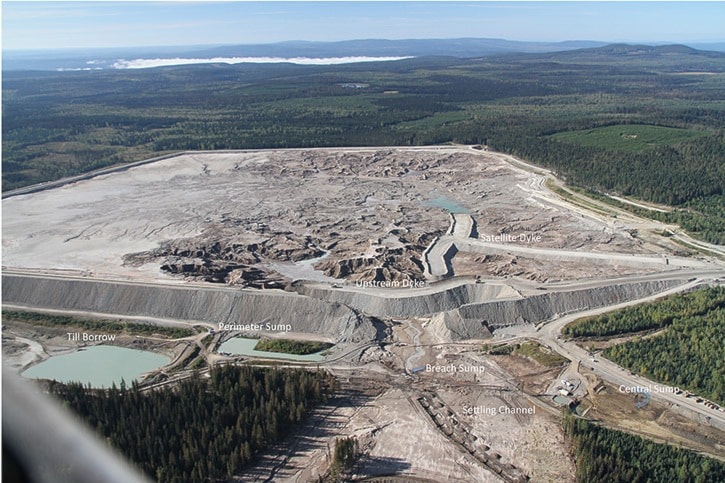There are more people working at Mount Polley Mine mitigating the tailings storage facility breach than there were before it happened, said Steve Robertson, Imperial Metals vice-president of corporate affairs.
“We have well over 450 people involved,” he told the Tribune during an interview in Williams Lake Wednesday.
All of the regular work force is back after a second round of recalls went out and in addition to another 30 people working on the cleanup of Quesnel Lake
“We’ve got consultants, people out on boats and geo-technicians,” he said.
The first thing that had to be completed was the dike, Robertson explained, and now that it has been, work continues inside the tailings impoundment to fill in low lying areas and deeply rooted canyons.
Sumps have been installed upstream of the dike and on the west side of the impoundment as efforts continue to capture water and redirect it to the springer pit.
“We continue to pump water out of Polley Lake into Hazeltine Creek and as of a few days ago had pumped it down by 70 centimetres,” Robertson said.
Wood debris has been moved off Hazeltine Creek’s delta and crews are now working in the creek.
Water is flowing in the creek — some of it from the pumping of Polley Lake and some from natural tributaries, he said.
Under the leadership of the Williams Lake Indian Band archaeologists are also working with crews in the creek.
Despite criticism that enough isn’t being done to match the magnitude of the disaster, Robertson acknowledged it did take time to get everyone working together as a team.
“I feel good about progress. There are a lot of people on the team.”
So far the weather has co-operated and hopefully will continue so crews can make headway, he said, adding the company has a deadline of the end of October to pull its boats out of the water.
In the meantime, UNBC faculty, staff and students are actively involved in research to understand the immediate and longer term environmental and ecological implications of the mine failure.
They are collecting water, sediment, and biological samples from the Quesnel watershed and looking at the movement of water and sediment plumes in Quesnel Lake.
Working with several other organizations, including universities, federal and provincial governments, research institutes, and First Nations, they will present preliminary findings at the annual Quesnel River Research Centre open house on Saturday Oct. 4.
